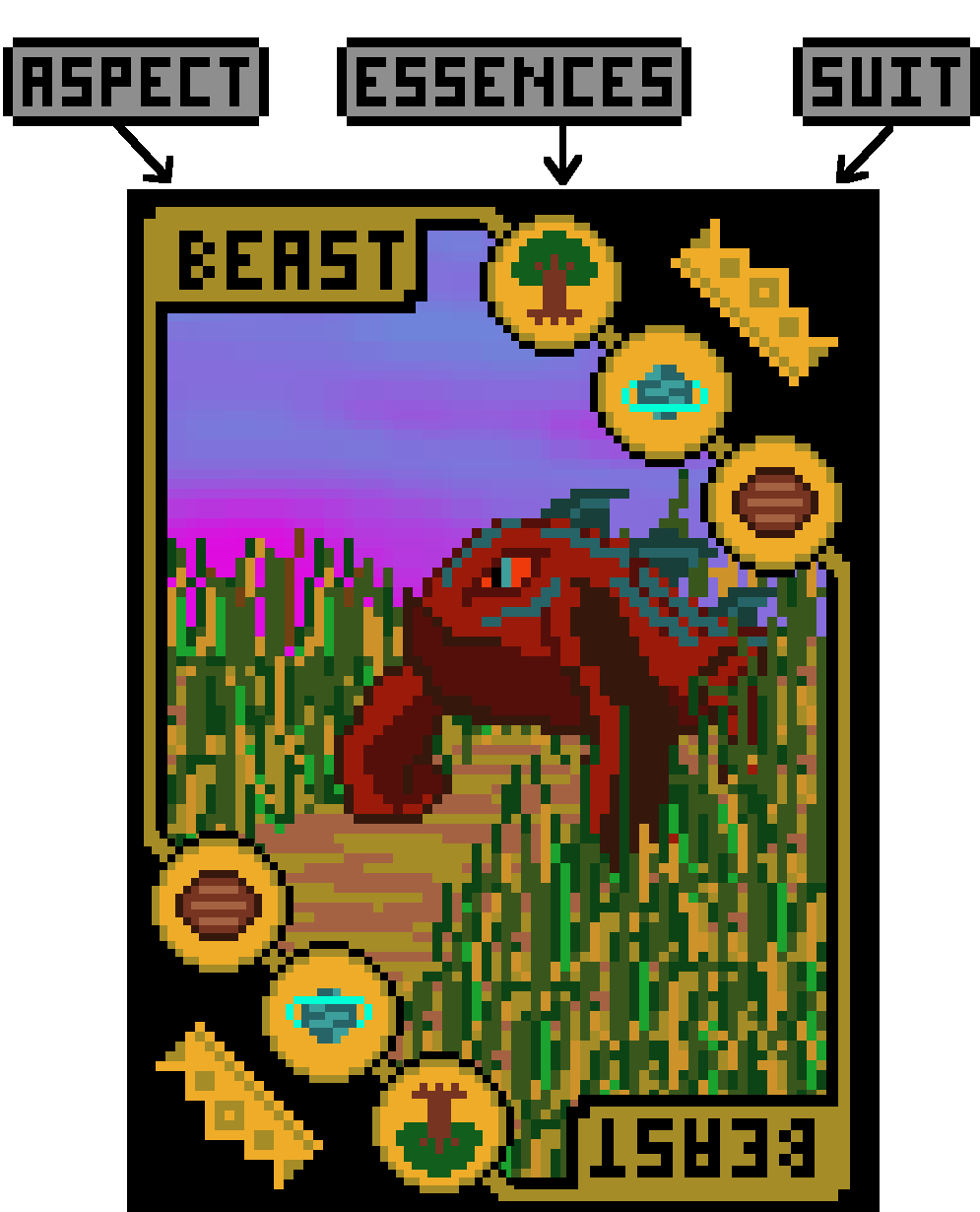What is Vyr?
A deck of playing cards from another realm used for a multitude of games.
Each card is comprised of three parts:

Aspect—The name of the card
Essences—The three circular symbols on the upper right of the card. Each Aspect is a representation of the culmination of the three symbols represented on the card. Each card of the same Aspect represents the same symbol combination.
The first Essence is the card's Origin
The second Essence is the card's Omen
The third Essence is the card's Element
Many games can be played with the Vyr deck, one of which is Vyr: Crosswinds.
Goal
Each player will be attempting to score the highest sets of three aspects across two hands of play.
Setup
The first dealer is whichever player is furthest from home. The dealer shuffles the deck and deals a hand of five cards to both players. The non-dealer then cuts the deck and places the cut card in the center of the play space.
Play
Beginning with the non-dealer, players alternate placing cards within a 3x3 grid centered around the cut card. Play until the grid is filled, leaving both players with one card left in hand.
- The non-dealer will choose if they will score by rows or by columns. The dealer will then score by whichever method was not chosen.
Scoring
Each set of three aspects is scored individually and then added to that player's total. These sets of aspects can score points in multiple ways:
Look at the set of three symbols in the Origin (top left symbol) across a set of three Aspects. You will score:
- 2 points if they are in Alignment (all the same symbol)
- 1 point if they are in Balance (all different symbols)
- 0 points if they are in Chaos (any other combination)
Repeat this process for the set of Omen (middle symbol) and Element (bottom right symbol) sets of symbols in the set of three Aspects.
If any of your sets of three aspects is in Perfect Balance (all nine symbols are different), you score an additional three points.
You will score an additional point if all three cards are of the same suit.
Each player should add up their points for the hand and record it. Then, the players will play a second hand, switching the roles of dealer and non-dealer.
The winner is the player who scored the most points across both hands.
In the event of a tie, the players will let fate decide. The non-dealer will cut a new card to replace the center card of the current grid. Both players will score additional points for their new center row or column. If there is still a tie, fate has decided there will be no winner.